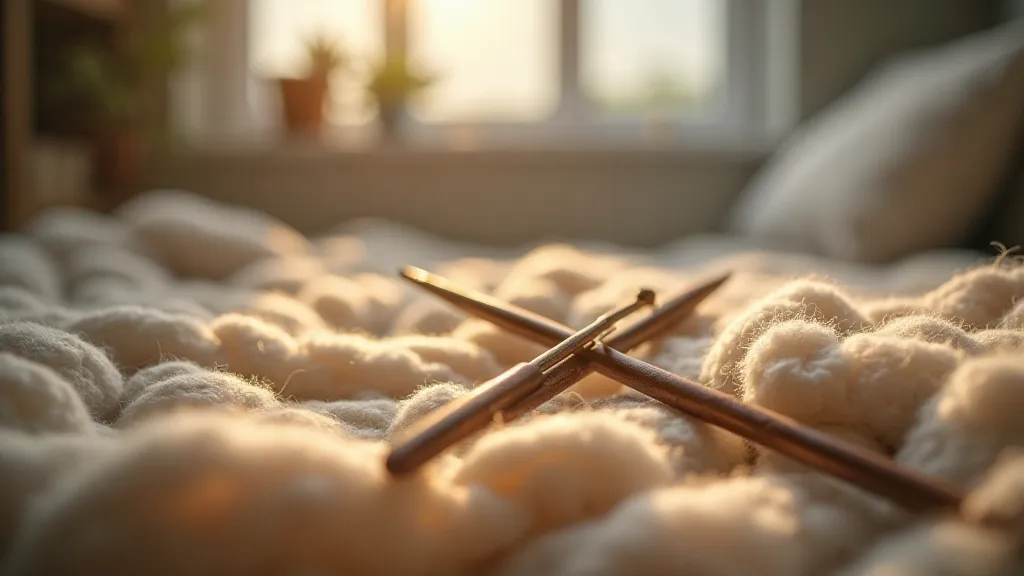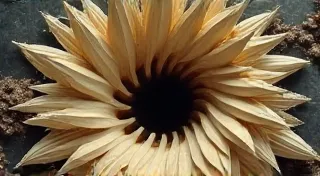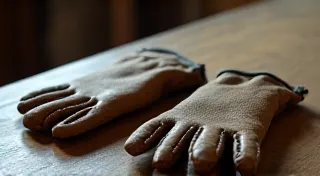Silhouettes in Steel: The Rise of Metal Needles and their Legacy
There's a quiet intimacy that comes with holding an antique knitting needle. It's not just the smooth, cool feel of the material in your hand, but the echo of generations past, the faint whisper of yarn spun and stitches formed. For centuries, the tools of the knitter were objects of humble beauty, crafted from whatever materials were readily available. Yet, the transition from bone, ivory, and horn to the gleaming promise of steel represents a pivotal moment – a shift not only in the tools themselves, but in the possibilities of the craft and the lives of those who practiced it.
I remember my grandmother, Elsie, a woman whose hands seemed eternally busy. Her needles, always, were bone. Not pristine, gleaming bone, but worn smooth by countless projects. They held the scent of lavender sachets and the faint ghost of wool. She’s gone now, but holding one of those needles transports me instantly back to her cozy kitchen, the rhythmic click of her needles a comforting soundtrack to my childhood. It's a connection, a tangible link to a heritage steeped in practicality and artistry.
The Age of Bone, Horn, and Ivory
Before the industrial revolution dramatically altered the landscape of crafting, knitting needles were crafted from natural materials. Bone, particularly animal femur bones, was a readily accessible resource, shaped and smoothed over time. Horn, from cattle and other livestock, offered a similar robustness. Ivory, a rarer and more prized material, was often used for more delicate needles, particularly those used for fine lace or baby garments. The process was entirely manual, a testament to the skill of the craftsperson. Each needle bore the subtle imperfections – a slight curve, a variation in color – that testified to its handmade origin. These weren't standardized tools; they were individual works of art, reflecting the personality of the maker. Beyond the materials, the very form of the needle held a significance; the slight curves, the taper - it all contributed to the artistry. Exploring the weight of tradition embedded in these forms adds another layer of appreciation.
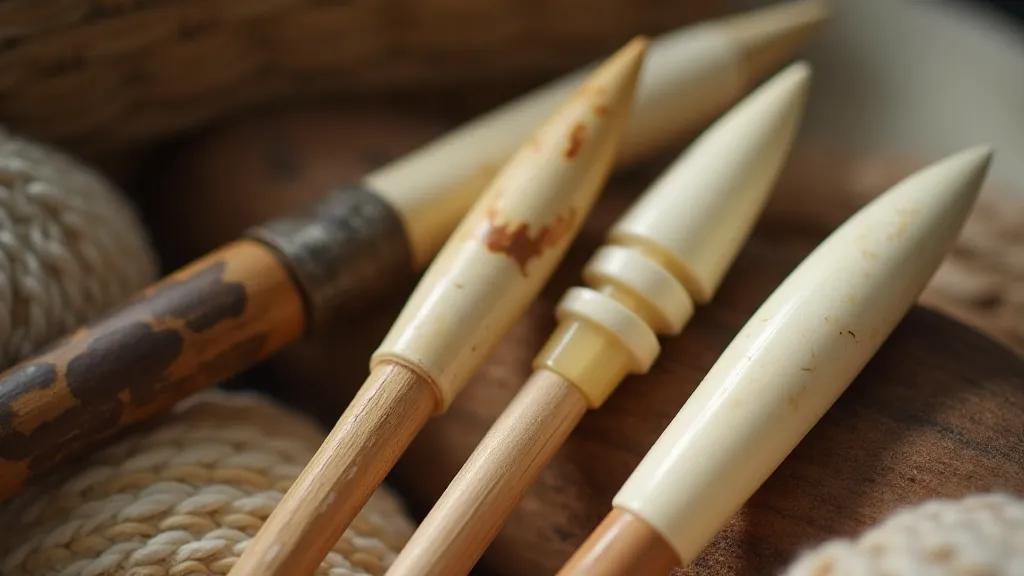
The limitations were clear. Bone and horn could be brittle and prone to splitting. Ivory, while beautiful, was costly and raised ethical concerns even in earlier times. The shape and consistency of these needles varied considerably, making it difficult to achieve perfectly uniform stitches. Yet, there’s a certain beauty in that imperfection – a reminder that the craft was intimately connected to the natural world. The sounds produced by these natural materials as the yarn passed over them held a unique resonance, creating a distinct atmosphere within the crafting space - a concept beautifully explored in Needle’s Resonance: Sound and Sentiment in Vintage Crafting. The evolution of knitting designs is inextricably linked to the tools used, revealing how the possibilities afforded by different needles shaped the patterns we know and love.
The Steel Revolution: Precision and Possibility
The late 18th and early 19th centuries brought about a profound transformation. The advent of mass production, fueled by advancements in metallurgy, ushered in the age of steel knitting needles. Initially, they were produced using hand-operated machinery, but the process rapidly evolved, leading to increasingly efficient and precise manufacturing. The process itself was complex and involved a subtle artistry of its own. Delving into the Alchemist’s Touch: Refining Techniques in Early Needle Fabrication reveals the intricate steps involved in transforming raw materials into usable tools.
Steel offered a myriad of advantages. It was stronger, more durable, and much more consistent than the organic materials it replaced. The ability to produce needles with uniform length, taper, and point revolutionized the craft. Suddenly, knitters could achieve a level of precision and uniformity that had been previously unattainable. This wasn’t just about aesthetics; it was about expanding the boundaries of knitting itself. More complex patterns, finer fabrics, and greater speed became possible. The shift wasn’t universally celebrated, however; a sense of loss permeated the crafting community as traditional methods faded. Indeed, a certain melancholy settled upon the craft, a feeling captured in Needle’s Requiem: The Gradual Disappearance of Traditional Crafting Practices, documenting the fading ways.
The rise of steel wasn’t universally welcomed. Some traditionalists mourned the loss of the handcrafted beauty and the connection to natural materials. However, the practical benefits were undeniable, and the steel needle quickly became the dominant tool. The cost also decreased considerably, democratizing the craft and making it accessible to a wider range of individuals. The standardization brought about by steel production also meant a decline in individual artistry and a loss of those unique imperfections that characterized hand-carved bone or ivory needles. While steel offered uniformity, it also diminished the inherent personality of each tool.
Collecting and Identifying: Whispers of the Past
Collecting antique knitting needles offers a fascinating glimpse into the history of crafting. Early bone and horn needles are highly sought after, particularly those exhibiting intricate carving or unusual shapes. Ivory needles are even rarer and command a premium. Identifying these early needles requires careful observation. Look for signs of hand-shaping, such as uneven tapers and subtle variations in length. The patina – the accumulated layer of oils and dust – can also provide clues about age and use. Many of these early needles will bear the marks of repair; a chip filled with glue, a slight crack reinforced with thread. These aren't flaws; they’re evidence of the knitter’s resourcefulness and the needle’s long history. The stories etched into these repair marks are a testament to the enduring value placed upon these tools, even when damaged.
Steel needles from the 19th century often bear the marks of the manufacturer. Look for stamped initials, logos, or patent dates. These markings can help to pinpoint the origin and age of the needle. Early steel needles often have a slightly rougher finish than modern needles, reflecting the limitations of the manufacturing processes of the time. The tips may be blunter, and the shafts may be slightly less polished. Examining the manufacturing techniques employed during this period provides a window into the technological advancements of the era. The shift from hand-operated machinery to more sophisticated processes profoundly impacted the production of these tools, influencing their durability and appearance.
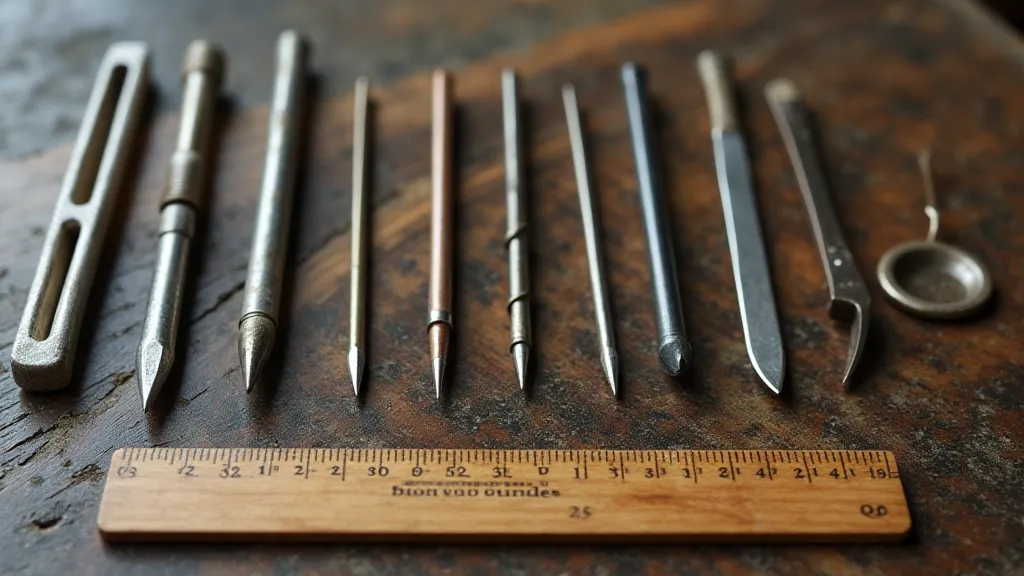
Restoration, when necessary, should be approached with caution. Cleaning should be gentle, using mild soap and water. Avoid harsh chemicals that can damage the patina. Repairs, if attempted, should be minimal and reversible. The goal is to preserve the needle’s authenticity and historical integrity. Preserving the evidence of age and use is key to understanding the history of the tool and the lives of those who used it. Knowing the origins of a needle, and what it was used for, unlocks a layer of significance that goes beyond its material value.
The Legacy Continues
The transition from bone, horn, and ivory to steel marked a pivotal moment in the history of knitting. It wasn’t just about changing tools; it was about expanding possibilities and democratizing the craft. While the romance of the handcrafted needle endures, the steel needle remains a testament to the power of innovation and the enduring appeal of a simple tool that connects us to generations of knitters past. Holding a pair of antique needles – whether of bone or steel – is to hold a piece of history, a tangible link to a craft that continues to evolve and inspire. The craft continues to evolve, influenced by new materials and techniques, but the fundamental principles remain rooted in the legacy of those who came before. The echoes of Elsie's kitchen, the rhythmic click of her bone needles, continue to resonate, connecting us to the enduring power of crafting.
